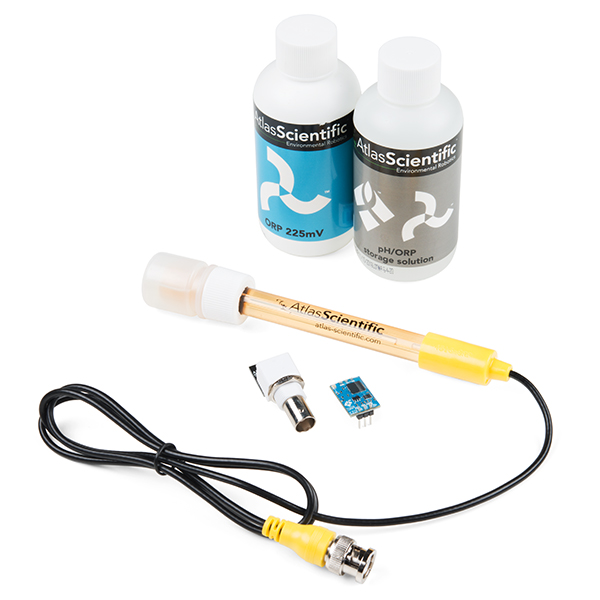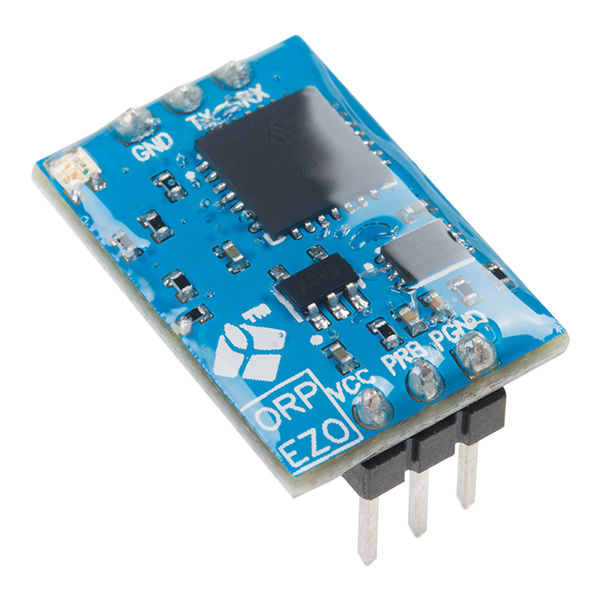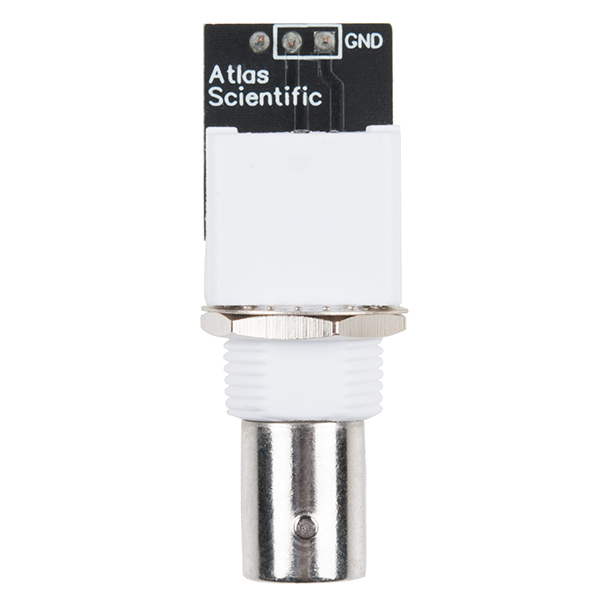ORP Kit
This is the ORP Kit, a large sensor kit that measures the ability of a solution to act as an oxidizing or reducing agent. Inside the kit you will find everything you need to get started, including an ORP (Oxidation Reduction Potential) probe, an EZO™ ORP board, two bottles of solution and a BNC connector board.
The ORP probe in this kit is a passive device that detects a current generated from the oxidation reduction of water. This current (which can be positive or negative) is very weak and can only be detected with a multimeter, or an analog to digital converter---but only if the ORP is very high and in the positive; an ADC cannot read a negative voltage.
Meanwhile, the EZO class ORP circuit is a small-footprint computer system that is specifically designed to be used in applications where the measurements of the oxidation reduction potential need to be as accurate and precise as possible. The ORP circuit will output readings from -1019.9mV to +1019.9mV. This circuit is even capable of reading ORP readings down to the tenths place.
Let it be known that ORP is a complex measurement and should not be compared to straightforward pH measurement. There are several factors that may make two ORP probes not provide the same measurement results in similar samples.
- 1x EZO™ ORP Circuit
- 1x Platinum Rod ORP Probe
- 1x 125ml (4oz) ORP Calibration Solution
- 1x 125ml (4oz) ORP Storage Solution
- 1x Pre-Assembled Female BNC Connector
- ORP Probe
- Range: +/-2000mV
- Response Time: 95% in 1s
- Max Pressure: 100 PSI
- Temperature Range: 1--80°C
- EZO Circuit
- Range: -1019.9mV--1019.9mV
- Max Rate: 1 reading per sec
- Single Point Calibration
- UART & I2C Data Protocol Support
- Default I2C Address: (0x62)
- Operating Voltage: 3.3V--5V
- Data Format: ASCII
ORP Kit Product Help and Resources
Core Skill: DIY
Whether it's for assembling a kit, hacking an enclosure, or creating your own parts; the DIY skill is all about knowing how to use tools and the techniques associated with them.
Skill Level: Noob - Basic assembly is required. You may need to provide your own basic tools like a screwdriver, hammer or scissors. Power tools or custom parts are not required. Instructions will be included and easy to follow. Sewing may be required, but only with included patterns.
See all skill levels
Core Skill: Programming
If a board needs code or communicates somehow, you're going to need to know how to program or interface with it. The programming skill is all about communication and code.
Skill Level: Rookie - You will need a better fundamental understand of what code is, and how it works. You will be using beginner-level software and development tools like Arduino. You will be dealing directly with code, but numerous examples and libraries are available. Sensors or shields will communicate with serial or TTL.
See all skill levels
Core Skill: Electrical Prototyping
If it requires power, you need to know how much, what all the pins do, and how to hook it up. You may need to reference datasheets, schematics, and know the ins and outs of electronics.
Skill Level: Rookie - You may be required to know a bit more about the component, such as orientation, or how to hook it up, in addition to power requirements. You will need to understand polarized components.
See all skill levels
Comments
Looking for answers to technical questions?
We welcome your comments and suggestions below. However, if you are looking for solutions to technical questions please see our Technical Assistance page.
Customer Reviews
No reviews yet.



